Dance Keeps Spirits High
Top photo by Danielle Cerullo on Unsplash
When I’m not teaching in school as an ALT, I teach dance to locals in my town every Sunday. I’ve been doing this for over a decade, and saw it as my chance to share my passion and talent with local residents who wanted to learn. But after the COVID-19 pandemic began, I learned from my students and the friends who dance with me that I was doing much than just organizing a dance team.
How It Began
I started teaching in Matsudo City as a cultural ambassador at the Matsudo International Exchange Association. At first, I was teaching local residents and Japanese kindergartens how to dance. I also taught at a local church, where those who attended learned of my skills and would invite me to church events.
In teaching and organizing a dance team here in Japan, I use a lot of English. I was able to teach my Japanese students basic English through the dance directions I would give. “Left, right, single-single double-double, 1, 2, 3, 4….”
Then, one day, they had an English teacher seminar for those who aspire to be an English teacher or an ALT. People from the church organization asked me to do a performance for the event. After my dancing performance, the individuals giving the seminar approached me and praised the way I was able to communicate English and Japanese for the people attending. They were wowed and impressed! They felt, “I can be a good English teacher”, which was a goal I was working toward at the time.
 From that experience , whenever I had the chance to teach my dance students English, I would emphasize the English words that they can use in the real life, not just in dancing. I learned the effectiveness of having a fun activity like dancing while learning English. It helps in building friendship, makes it easier for the students to learn while doing a fun activity, and it helps them relax.
From that experience , whenever I had the chance to teach my dance students English, I would emphasize the English words that they can use in the real life, not just in dancing. I learned the effectiveness of having a fun activity like dancing while learning English. It helps in building friendship, makes it easier for the students to learn while doing a fun activity, and it helps them relax.
How It Helped
In time, I learned that my influence on locals not only helped improved physical health with exercise, but also mental health and self esteem. Many of my Japanese students and I have performed at several events, which require lots of practice. It’s a particularly in-depth exercise and it keeps the dance learners fit and healthy. This in turn helps them feel proud about being in shape, and when people compliment the performances.
Recently, after a practice session, one of my Japanese student shared her personal experience during the darkest months of the pandemic. She had been infected with COVID-19, and she believed that the strength and training of our rehearsals had actually helped her.
The physical and mental stamina she had built up helped her in overcoming illness. Plus, she was looking forward to getting well so that she could continue her dance lessons. She was hoping to dance with the rest of us again. Instead of being scared, she remained optimistic and kept her spirits keep high.
In Conclusion
I think this is my tip to all. Find your passion, as I did with dance, and you’ll also find many opportunities. You can help people, you can get inspired by them, and together, we can build up our physical and mental fortitude. During these difficult few years, my passion in helping people through dance has only grown. I realize that dance is a tool to help and improve the health and well-being of others. And on top of that, it is also a tool for communication.
My “dance communication” improves the quality of life of the people around me. It helps them learn. It helps them grow. Maybe it even helped in some small way with the hard times we’re all going through these days. Whatever the case, I have learned it’s a passion worth pursuing. And that’s why I continue to teach dance class in my town every Sunday.
Photo Credits:
Top photo by Danielle Cerullo on Unsplash
Additional photos provided by Diane Soria
All other content (text) created by the original author and © 2022 MUSUBI by Borderlink
Top Photo: Fang Guo (original author)
Quick! What’s the highest point in Tokyo? If you said Tokyo Skytree, think higher. And bigger! The Tokyo “prefecture” includes multiple cities, forests, valleys, and even islands! Of course, this also includes mountains, such as Mt. Oyama. The highest point in Tokyo however is Mt. Kumotori.
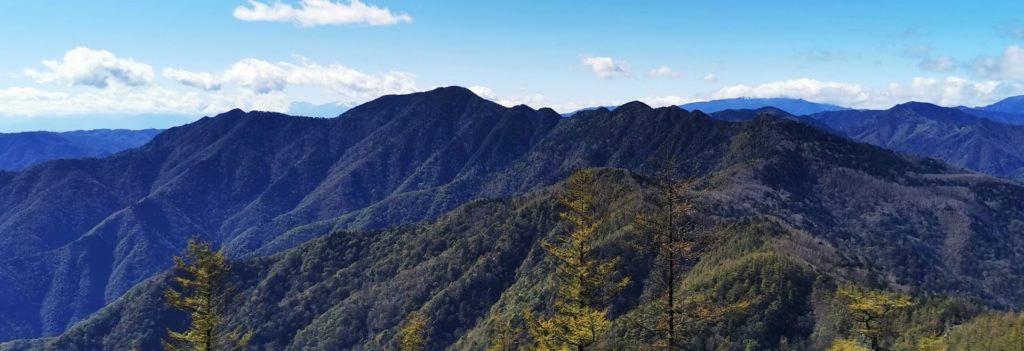
Climb Every Mountain
For those who love outdoor activities, Mt. Kumotori (雲取山 or Kumotori-yama in Japanese) is worthy of climbing to the summit at least once. On the list of the 100 Famous Mountains of Japan, it is a gentle climb even at 2,017 meters.
Mt. Kumotori is one of the water sources of the capital city. As it stretches across several prefectures, it is a long hike to the top. However, it is a very popular mountain, and there are always many hikers except in the dead of winter and midsummer. It is even possible to stay overnight in a mountain hut near the summit.
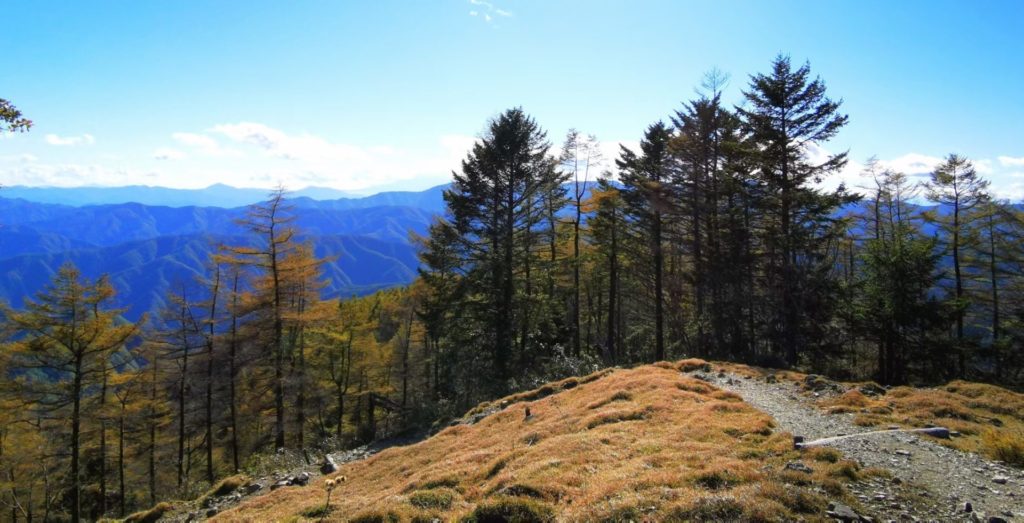
When I went hiking there on an October weekend, I could not book accommodations. So I made a round trip of around 22.5 km on a sunny autumn day. For those that prefer a slower journey, there is also a camping area with around 30 sites available for 500 yen. Carrying a tent and camping out is the best way to enjoy the sunrise from the summit.
Search High and Low
There are several routes up Mt. Kumotori. I took the Kamosawa Route from Okutama, West Tokyo. Mitsumine Shine Route from Saitama Prefecture is also very popular. The Kamosawa route was 12 km from the trailhead to the peak; however, it did not feel so tough. The route is a gentle slope and it is kept in good condition. Climbing Mt. Kumotori is for those who want a leisurely trip rather than risk life and limb.

On my trip, after 4 hours hiking, I was fortunately blessed with magnificent 360 degree view. Particularly stunning were the snow-capped peaks of the Minami Alps, and a spectacular view of Mt. Fuji. I could not help but imagine the brilliance of this place in winter and the lively greenery of spring.
There are hundreds of mountains in Japan, with just a percentage making the top 100. Pack a tent, put on your hiking shoes, and pick one to experience. Where there are mountains, there is nature. And it is beautiful!
Photo Credits:
All photos were provided by the original author (Fang Guo)
All other content (text) created by the original author and © 2022 MUSUBI by Borderlink
Top Image: “Yoshinoya Beef Bowl, regular size” by Ocdp uploaded to Wikipedia. This file is made available under the Creative Commons CC0 1.0 Universal Public Domain Dedication
Japan is home to some of the greatest food in the world. People travel from all over to taste this expertly-prepared food. For some, cooking is not just a job, it is a lifestyle; Japan is no different. Chefs have spent decades perfecting their craft. It is no surprise that Tokyo has more Michelin star restaurants than anywhere else in the world.
Today, we will not be talking about those places.
You should definitely try Japanese high cuisine whenever you get a chance. But we all know plenty of people who still intimated by Japanese food, no matter the price tag. I have had many people visit me who are terrified to eat anything they do not recognize. Besides, there is still a language barrier between us and many of the best local restaurants.
And even for adventurous professionals, there is still the small issue of cost. I have eaten at some of the best restaurants in the country, but I have also dropped over ¥10,000 yen for a single dinner at those places. So let’s look at a few places which are simple, easy, and cheap to eat at. And, most importantly, are a great way to ease one into the world of Japanese cuisine.
Familiar Tastes in a New Place
Imported Fast Food Franchises
When I first moved to Japan, I did not touch McDonald’s for a whole two years. I had plenty of them in America; I did not need them here. But I now realize I was missing out. McDonald’s – or マク as they are known in Kanto (seriously, you will get some confused looks if you call them anything else- except Kansai, where it’s マクド) – are pretty much identical all around the world. Although the fries definitely taste better here!
It’s a great place to take people who are still nervous about Japanese food. It also has another huge benefit… free WiFi! You will soon discover how much of a luxury WiFi is throughout Japan. If you go there after five pm, grab a potenage (French fries and McNuggets) for only ¥500 and do some online work.
If the golden arches aren’t to your liking, you can also find Burger King in Japan. Like their arch-nemesis, they have a variety of limited-time special burgers (usually once a month). They’re also a decent choice if you’re looking for a plant-based burger. Kentucky Fried Chicken has a strong presence, as does Wendy’s- although you may find the latter a little different then the US version. And there’s Pizza Hut and Domino’s, although they too have a wider variety of toppings (and higher prices) than what you may be used to.
HUB
Do you want to grab a few beers? Unfortunately, that could be a bit harder than you think. Many bars have a steep cover cost or table charges, and some are essentially an exclusive club to their best patrons. It’s faster and cheaper to drink in the comfort of your own home than out on the town. But there is a chain of British pubs called “HUB” (as well as similar chains outside of Tokyo) which won’t have those aforementioned problems.
Walk in, buy a drink and some food at the counter, and don’t be afraid to talk to the other people there. It’s a well-known fact that every Hub in Tokyo will have several ex-pats parked at the tables at nearly all times.
Branching Out with Foods You Know
Sushi
Sushi is probably the first thing many people think of at the mere mention of Japan. Everyone needs to try the sushi. You could eat at Jiro’s Sushi in Ginza (¥45,000 a plate with a required 90+ day advanced reservation) or you could go to a place like Kurazushi or Sushiro where just about everything is ¥100. These are really cute places where the sushi gets sent around on a little conveyor belt (回転ずし or kaiten-zushi).
Just grab one as it passes by (or better yet, order a fresh one off the included tablet) and at the end you pay based on the number of dishes you have. Don’t like fish? No problem. Most stores would also have nice selections of things like mini hamburgers or barbecue pork on rice. Since everything is so cheap, feel free to try something new. Just avoid them on a Friday evening when they are raided by students.
Ramen
Now here is the true heart and soul of Japanese food. You could write entire encyclopedias about the different types of ramen and not even touch the surface. Most places are locally-owned mom and pop shops, but don’t let that scare you away. Everyone needs to try the ramen, and it should always be the next step when venturing out into more foods. So just find a place and walk in.
Since the chef needs to always be behind the counter, these places usually have little vending machines for food tickets. Pay first, hand the ticket to the chef, and enjoy the atmosphere. If you aren’t sure what to eat, Japanese restaurants love to have food rankings listed at the very front. You can never go wrong with #1.
Saizeriya
This is my personal choice for a cheap and tasty eat. Saizeriya is what they call a family restaurant, a cheaper eatery where busy families, cramming students, and couples on their first date will often spend hours at a time.
Saizeriya specializes in Italian food, but their menu is massive. Pasta? Pizza? Salad? Steak? Wine? Escargot? They have it for about as cheap as possible. It’s a delicious place with plenty of variety.
And, most importantly, they have a Drink Bar.
Now Let’s Get Experimental
Supermarkets
Even for the people who don’t know how to cook (the author cautiously raises their hand) there’s still plenty to eat at supermarkets. They will often have a prepared lunchbox, called a bento box, with a little bit of everything. I also highly recommend getting some fresh tonkatsu or tempura from the deli.
Most will even have microwaves (a レンジ or “range” in Japan) and sometimes a few tables to eat at right there. What’s even better is they will often have flash sales, usually closer to closing time, as well as a discount day in the middle of the week. And yes, most supermarkets do have a closing time here. Thankfully convenience stores are all open 24/7, and they will have a great assortment of bento boxes and even fresh fruit and vegetables too. Just be prepared to pay a little more.
Japanese Fast Food Chains
Here’s a few more great, cheap, and easy places.
Go-Go Curry: Award-winning best curry in Japan for several years running. Look for the iconic gorilla logo. The style of curry served here is Kanazawa-style, which is thicker than the more conventional kind. Make sure you come hungry, especially if you plan on getting anything larger than the smallest plate size. Seen here is the “Grand Slam” major curry. The massive “World Champion Curry” is limited per day, and large enough that it may qualify for its own postal code.
MOS Burger: Tired of McDonald’s and BK? Japan’s homegrown burger chain offers a higher class of fast food joint with Sloppy Joe-style burgers. If even that’s not enough for you, there’s Freshness Burger. The MUSUBI Editor will argue that one is not just the greatest burger chain in Japan, but on the planet.
The Lightning Round
Hidakaya: Instantly recognizable kanji (日高屋, but much more balloony) and a great gyoza set.
Gusto: Another popular family restaurant with a phone book sized-menu. We definitely recommend the “cheese in hamburger”.
Sukiya: The ultimate Japanese-style fast food: gyudon. Lots of meat on top of rice. Open 24 hours and about as cheap you’ll ever find good food.
Pepper Lunch: The first meal I ever ate in Japan. Steak and rice you cook in the hot plate at your table. For a slightly fancier version of the Japanese steakhouse, there’s Ikinari Steak.
These are just some of the many places to fill your stomach in Japan. Definitely do be adventurous and keep trying new kinds of food. But if you are in a hurry, on a budget, or still a little nervous, you can’t go wrong with any of these places.
Photo Credits:
Top Image: “Yoshinoya Beef Bowl, regular size” by Ocdp uploaded to Wikipedia. This file is made available under the Creative Commons CC0 1.0 Universal Public Domain Dedication The person who associated a work with this deed has dedicated the work to the public domain by waiving all of their rights to the work worldwide under copyright law, including all related and neighboring rights, to the extent allowed by law. You can copy, modify, distribute and perform the work, even for commercial purposes, all without asking permission. Wikimedia Commons Link
All other content (text) created by the original author and © 2022 MUSUBI by Borderlink
Top Image: By Takoyaki0815 – Own work, CC BY-SA 4.0, https://commons.wikimedia.org/w/index.php?curid=90807031
Previous Version: LERK licensed under the Creative Commons Attribution-Share Alike 2.5 Generic license.
Looking for a new place to explore? Are you a fan of visiting vintage-style neighborhoods around Japan such as those in Kawagoe? Ever wondered what’s on the very edge of Tokyo before exiting the city? Then Shibamata is the place for you!
A City Out of Time
Shibamata is a town on the east side of Tokyo, bordering Chiba Prefecture. This town has been around since the Edo Period. In those days, it served as an entertainment center for commoners. In more recent times (the late 1960’s) it was used as the filming location for a long-running movie series in Japan, “Otoko wa Tsurai yo” or “It’s Tough Being a Man” in English.
Shibamata isn’t a very well-known destination for tourists coming to Japan. However, it is a popular attraction for many local tourists who enjoy these movies.
But even if you aren’t familiar with the films, I think it is still a wonderful place to visit. Here, you can experience the beauty of Tokyo from a past era and so much more.
What to do in Shibamata
Just a little outside of Shibamata Station, you will find the shopping street, Taishakuten Sando. Here you can see a lot of the filming locations of the movie. The buildings all have a look straight out of the past.
On this street there are a lot of great restaurants to visit, as well as shops. At some of these restaurants, you can even try out carp (koi fish). It has a very interesting taste and is definitely worth a try. There are a lot of other different things to try here like a sweets shop and many other Japanese-style restaurants.
At the end of Taishakuten Sando is the temple its named after, Taishakuten Temple. Here, you can see a lot of wood carvings all along the shrine walls. On these wood panels, you can see scenes pull from different Buddhist scriptures.
If you are familiar with Nikko Toshogu, a lot of these wood carvings were made by the same artists who worked on the ones in Nikko.
Beyond Shibamata
Edogawa River is the natural border that separates Tokyo and Chiba prefecture. In Shibamata, you can board a small ferry to take a trip across to river to the Chiba side and back.
On the Chiba side, there’s a different view of Japan, this time more serene with less people and more nature. You can take a walk along this path an enjoy the area for a while before heading back on the ferry to Tokyo.
Shibamata is a town that has a lot of history behind it. It was once a town for entertainment in the Edo Era. In the Showa Era, it became a filming location for a popular movie series. Now it is a town preserving the beauty of the past.
If you want to experience a piece of Japan history, this is one of the places to do it.
Photo Credits:
Top Image: By Takoyaki0815 – Own work, CC BY-SA 4.0, https://commons.wikimedia.org/w/index.php?curid=90807031
Previous Version: LERK licensed under the Creative Commons Attribution-Share Alike 2.5 Generic license.
All other content (text) created by the original author and © 2022 MUSUBI by Borderlink
Top Image: Valeria Boltneva from Pexels
Keeping your immune system strong is an important way to fight those dreaded winter coughs, sniffles and the flu. When you catch a bug or virus, your immune system works to protect your body as well as keep you well.
There are plenty of purported remedies. But do the “old wives’ tales” like honey and lemon drinks really work? And what you should be drinking to build and maintain strong immune system? Here’s my Top 5!
Drink Your Greens
Eating (or drinking) more fruit and veggies is always a great way to support and strengthen your immune system. All you need are your favorites, a blender, and a glass. Voila! Instant vegetable juice or smoothie. Vegetable soup is another great way of drinking more veggies.
Honey and Lemon
A warm honey and lemon may sound old-fashioned. But adding lemon to your water not only provides a boost of flavor; it also offers nutritional benefits. Lemons are rich in Vitamin C, which supports immunity.
Added to those benefits is the value of honey. Honey has antibacterial, anti-inflammatory and antioxidants properties. Among many things, these are said to support your immune system. Plus, it just plain tastes good!
Infused Water
Drinking more water is good for your health in general, as well as your immune system. Try infusing your water with berries or citrus fruits for a delicious drink. You can even use vegetables or some herbs. I always use cucumber and fresh mint leaves in mine, as it’s very refreshing! Also known as Detox Water, an infused glass of H2O is a great way of improving your heath.
Meiji Probio Yogurt R-1 Drink Type
This yogurt is known for its “catchphrase” of “strengthening lactic-acid bacilli”. It is made using a specific lactic acid bacterium,”1073R-1 lactic-acid bacilli”.
It is a healthy product, so it’s great to work into your daily routine. It’s also the number 1 best-selling drinkable yogurt here in Japan. While it comes in fruit flavors like strawberry and blueberry, though I prefer the regular yogurt flavor myself. Low in sugar and calories, it’s a staple worth adding to your diet.
Green Tea
At MUSUBI, we love Green tea. I mean, love it. It is loaded with antioxidants, and many believe it may improve brain function. It also has powerful antioxidants that may protect against cancer and possibly reduce the risk of dementia.
Green tea can help in reducing the risk of bad breath. It helps with a reduction in blood sugar levels. People across Japan use it as an effective means of fighting off colds. Plus, it contains catechin, a powerful antioxidant, that keep cells from aging. Also, it’s said to prevent high blood pressure as well as diabetes. The bottom line is, you may want to consider making green tea a regular part of your life.
If you’re looking for some delicious, immune-system boosting drinks, I hope you’ll check out these options. As they say, “Happiness begins with good health”.
Photo Credits:
Top Image: Valeria Boltneva from Pexels
All other content (text) created by the original author and © 2022 MUSUBI by Borderlink
Do you want to experience more of traditional Japanese culture, but tea ceremonies and 4-hour plays aren’t your thing? Then look no further than Akita in the Tohoku region of north Honshu. It’s one of Japan’s most distinctive and quirky prefectures. Akita has a strong sense of identity, and plenty to offer the curious visitor.

An Akita dog on proud display
Akita is of course the origin of the beloved and iconic Akita dog (Akita inu or 秋田犬). It is also often said to be home to the most attractive women in the whole country, as posters around Akita City will proudly proclaim.
But beating out both of these appeal points as the face of Akita’s identity is….. ogres traumatizing children. Specifically, ogres known as “Namahage”.
If, like me, you find it extremely fascinating to see what the monsters of another culture’s folklore look like, then there is no better place to be than right here in North Western Tohoku. Let’s take a look at what Namahage are, just how prevalent they are in Akita, and how you too can experience this unique piece of Japanese culture.
A Prefectural Icon
Namahage have unquestionably become the mascot and defining icon of Akita prefecture. They are likely to be used as Akita’s representative in any kind of illustrated map or other cartoon representation of Japan’s prefectures. This is something the people and local government lean into heavily.
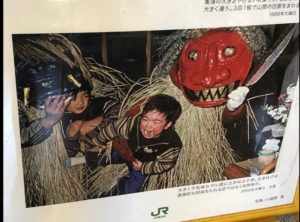
One of many Namahage posters decorating Akita station
For most visitors to the prefecture, your journey begins with arrival at Akita Station. You will immediately be greeted by posters of these ogres snatching away hysterically bawling children. These have been proudly pasted all over the walls of the station and help set the mood.
Going deeper in, and you will see various giant replicas of the Namahage masks on display, giving Akita station a certain character to it unlike any other. Within the souvenir shops you would expect from a city’s main station, the various cookies, pies, and other snacks feature Namahage on their packaging.
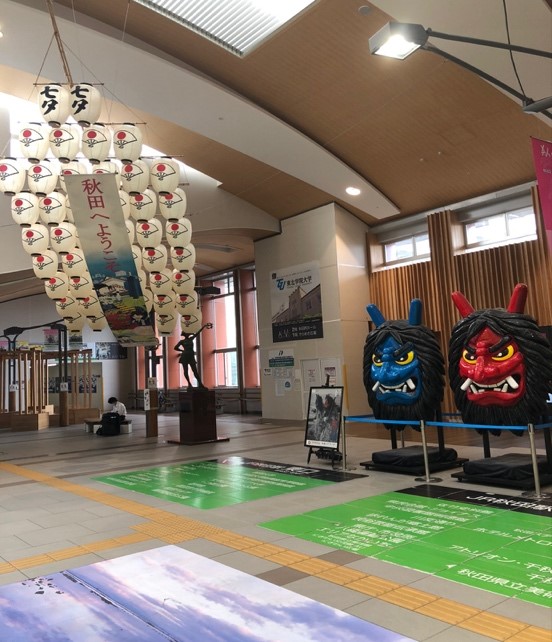
View from Akita station main gate
Venturing out into Akita city, paintings and sculptures of Namahage commonly decorate various shops and restaurants. Locals drink Namahage-branded alcohol commonly available at local convenience stores.
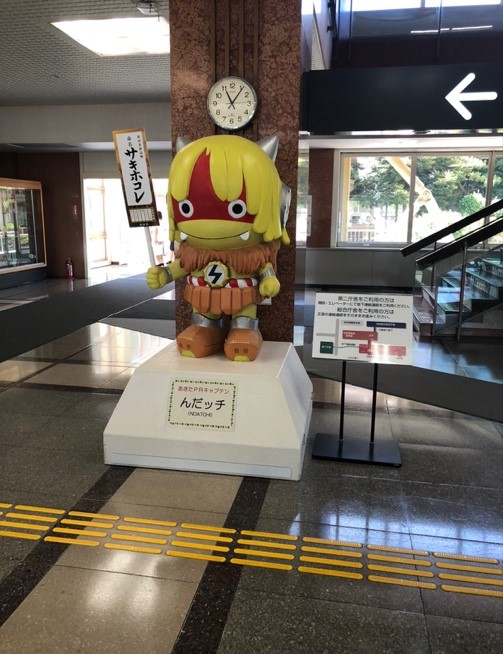
Namahage at city hall
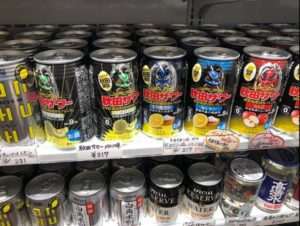
Namahage drinks at a local grocery store
It cannot be overstated how inescapable these monsters are. Already it’s clear that this isn’t some obscure gimmick or seasonally limited thing. This is an everyday part of life in the prefecture.
Our hunt for monsters is already off to a great start.
Namahage Explained
But just what is a Namahage? Where do they come from? And why do parents let this happen to their children? Understanding of what a Namahage is varies by legend.
They are best known here in Akita prefecture, but much less well-known versions of the tradition do exist in isolated pockets of such areas as Iwate, Ishikawa, and Fukui. They are most commonly interpreted as ogres or wild mountain spirits. Variant legends claim they are shipwrecked warriors from the attempted Mongolian invasions of ancient past. Another story holds that a Chinese emperor brought them to the region. Whatever the case, they are characterized by their ogre masks, straw cloaks, and oversized prop knives.
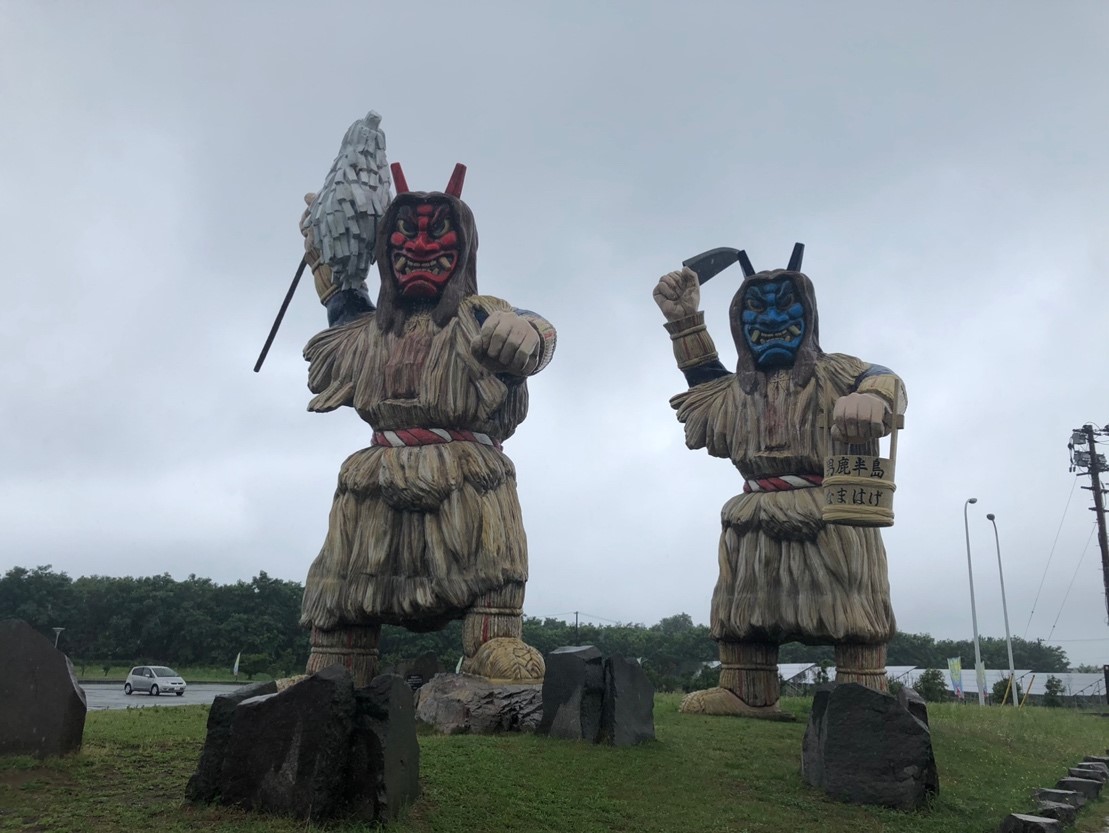
Giant Namahage outside of a tourist center
While adopted as the icon of the whole prefecture, they originate in a small town called Oga located slightly North of Akita City. They travel in pairs, visiting homes on either New Year or the Japanese “Little New Year”, where they scold and intimidate children to stop being lazy or disobedient. In fact, the name “Namahage” implies they are going to use their knives to forcefully scrape off the heat blisters one would get on one’s feet from lazing around by the fireplace all day instead of being productive.
Parents will make requests in advance to the Namahage actors for them to make a home visit, often providing them specifics on what behavioral issues they want the Namahage to bring up when they’re scolding the children. Once the kids have been frightened into swearing to change their ways, the Namahage leaves, often having been bribed into accepting mochi in place of taking the child.
Where to Find These Ogres
What’s that I hear you say? I want to see this for myself, but I won’t be able to go on New Year’s specifically, and I don’t live in Oga village with small children. What am I to do?
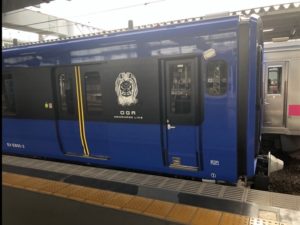
The Namahage line train
Never fear, as Oga has got you covered. Having come this far, a few displays and branded food packages won’t be enough to satisfy your folklore craze. From Akita Station, it’s around a 40-minute train ride on the appropriately named Namahage line to Oga station.
As you ride the train, look carefully out the windows, and on a clear day, you may just see the giant Namahage statues of the visitor center menacing over local traffic. Definitely worth a stop and a photo op on the way back.
Arriving at Oga, you’ll see they’ve gone all-in with this tradition, with a pair of Namahage lurking in the station waiting room and various other related decorations scattered about.
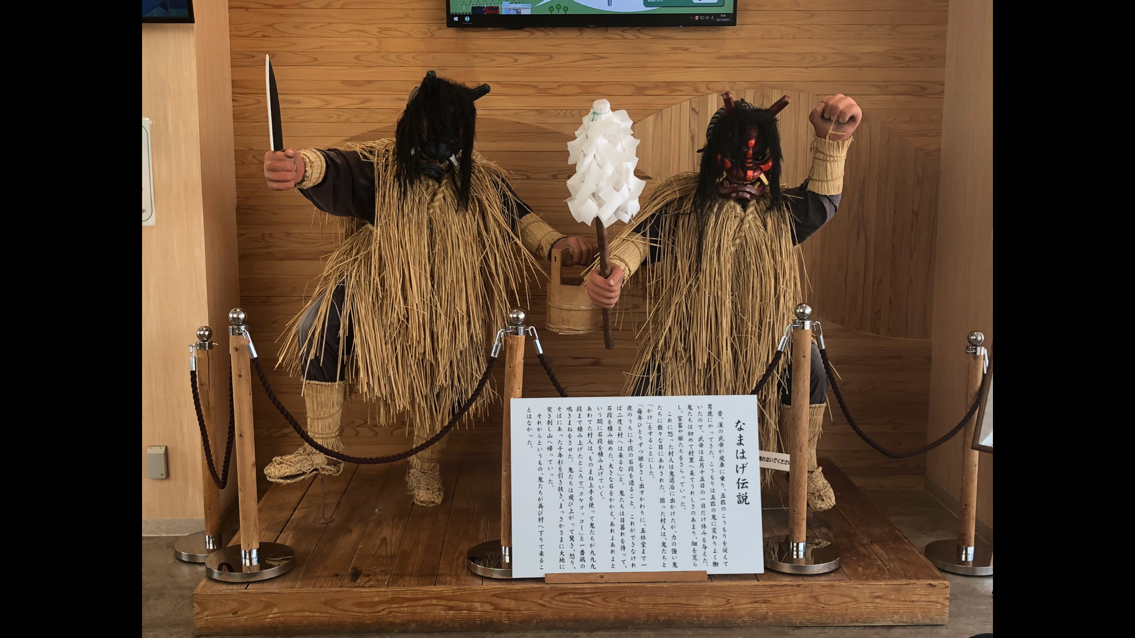
Display at Oga station
From Oga station, take a short bus ride to the Shinzan shrine, the home of the Namahage. It’s a shrine that, like Akita, has a lot of personality. It is here that the Namahage begin their rampage on New Year’s. Walk 2 minutes down the hill to the Namahage museum, where we reach the climax of our journey.
Here you can see plenty of information on the Namahage. There’s also theater showing videos of the monsters in action, collections of masks both from Akita, and a display for similar monster traditions in such countries as Hungary and Indonesia. Best of all, a hall filled with dozens of Namahage.
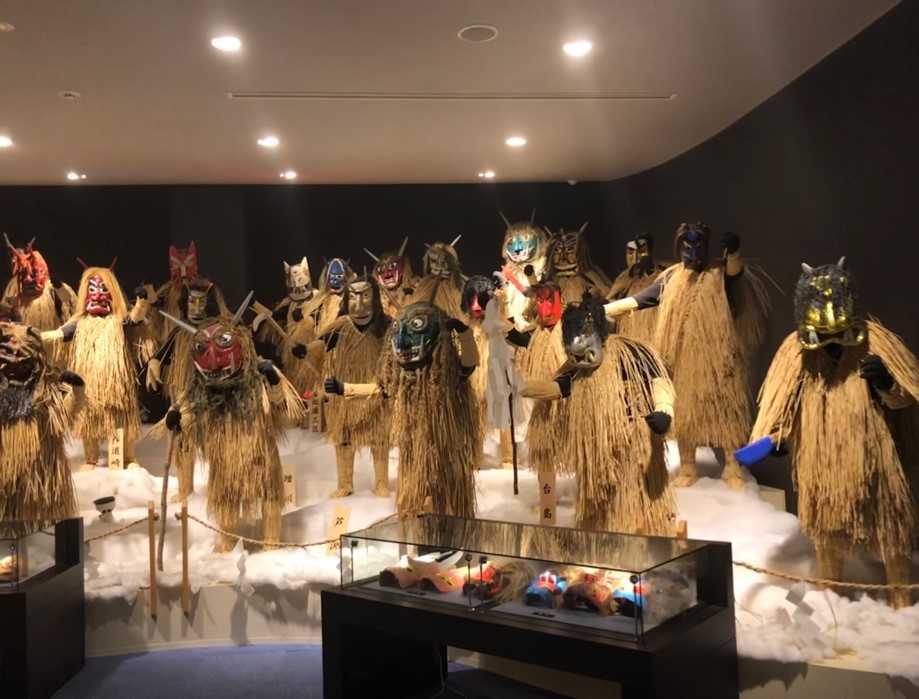
Inside the Namahage museum
Each small town or sub-district is purported to have their own variant in mask style, and you can see them all on display here. Finally, head next door, to where they hold Namahage shows hourly. Sit on the tatami mat of the traditional wooden house and get the full experience for yourself. Cower as two Namahage beat down the door and burst inside.
Japanese tourists often bring their own babies and toddlers to this show, so there will most likely be some crying in the audience for a truly authentic experience. From there, actors entertain the Namahage with food and drink as they pull out their naughty list and consult on who they’ve seen being up to no good in the village. It’s truly an experience like no other.
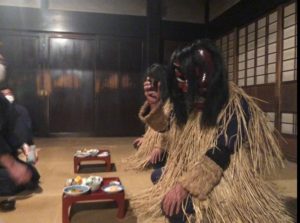
Namahage show
I cannot recommend Akita enough. There’s excellent food, nature, and more “conventional” festivals here as well to balance out your trip. But it’s this exciting, wild, and scary tradition that truly puts the prefecture above its competition.
If folklore and monsters get you excited, you won’t find anywhere better in the whole country. Akita is easily reached via Shinkansen or night bus from major hubs like Tokyo or Sendai. When next having free time and an adventurous spirit, give the place a try for an experience you will never forget!
Photo & Information Credits:
All photos are original and taken by me (Jacob Newcomb) on location.
Information used came from displays at the Namahage museum, as well as the Wikipedia article on Namahage and “A study of Appossha”, by Hiroko Shiose, a Japanese language academic research paper which I personally translated into English as a final term project in my studies at the University of Florida.
https://www.gsid.nagoya-u.ac.jp/bpub/research/public/forum/48/02.pdf
All other content (text) created by the original author and © 2022 MUSUBI by Borderlink
